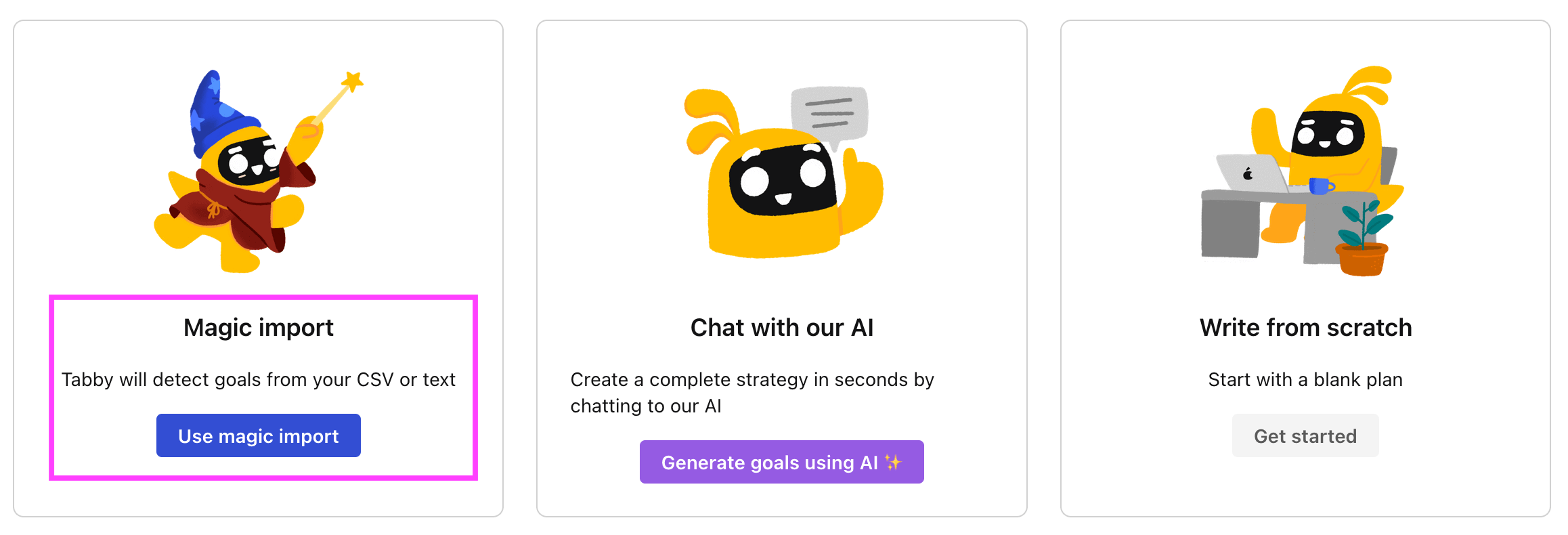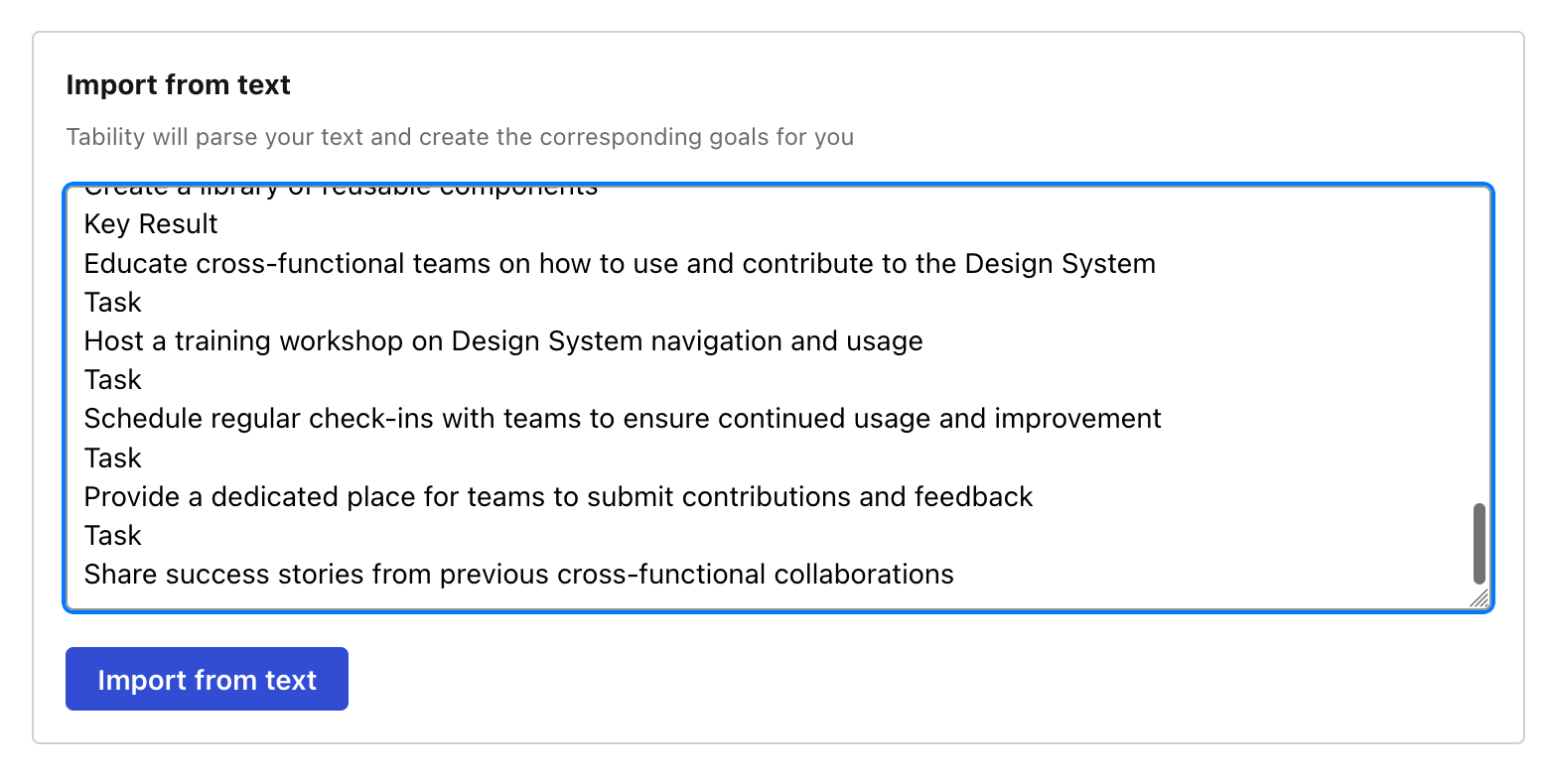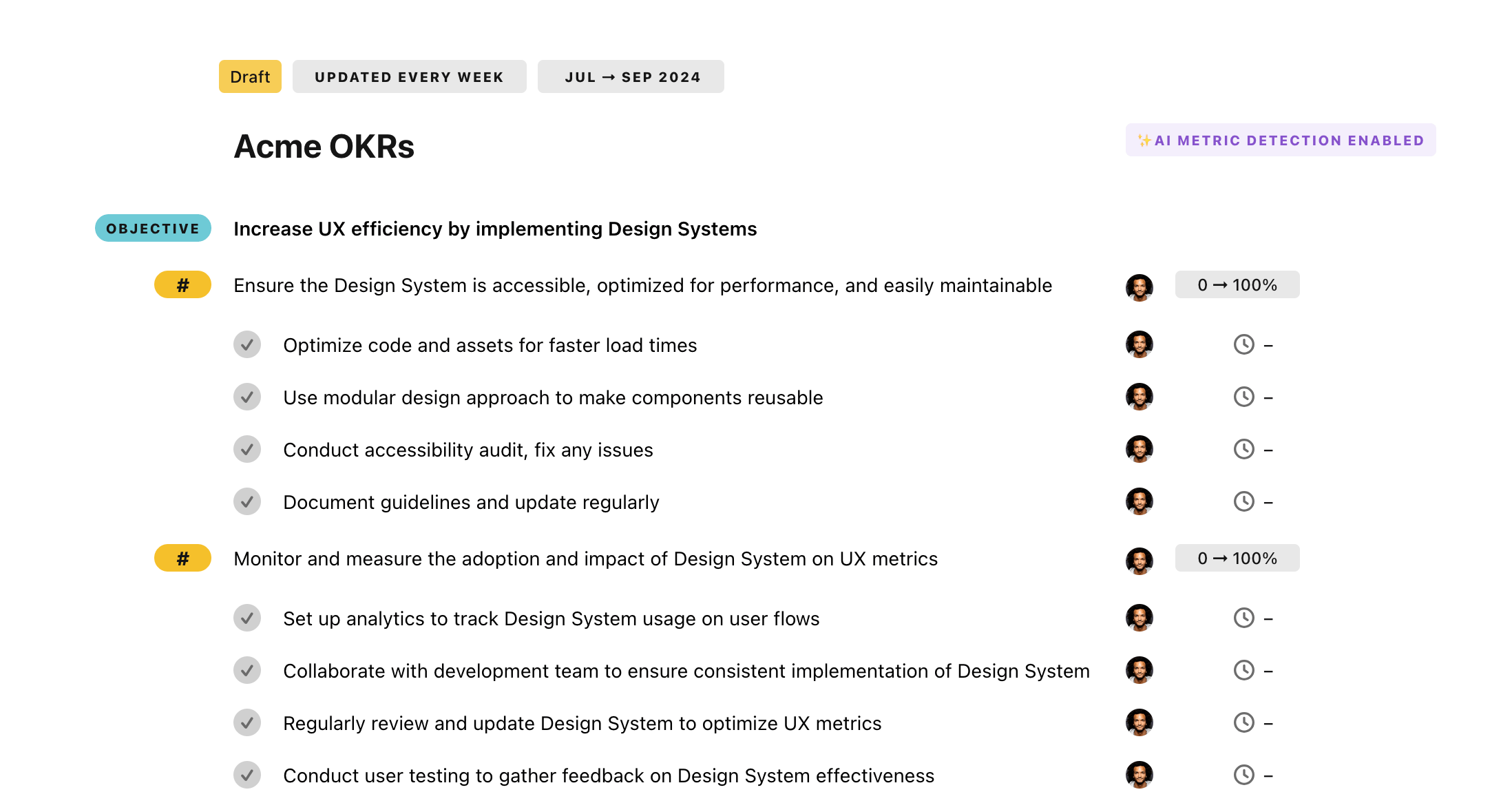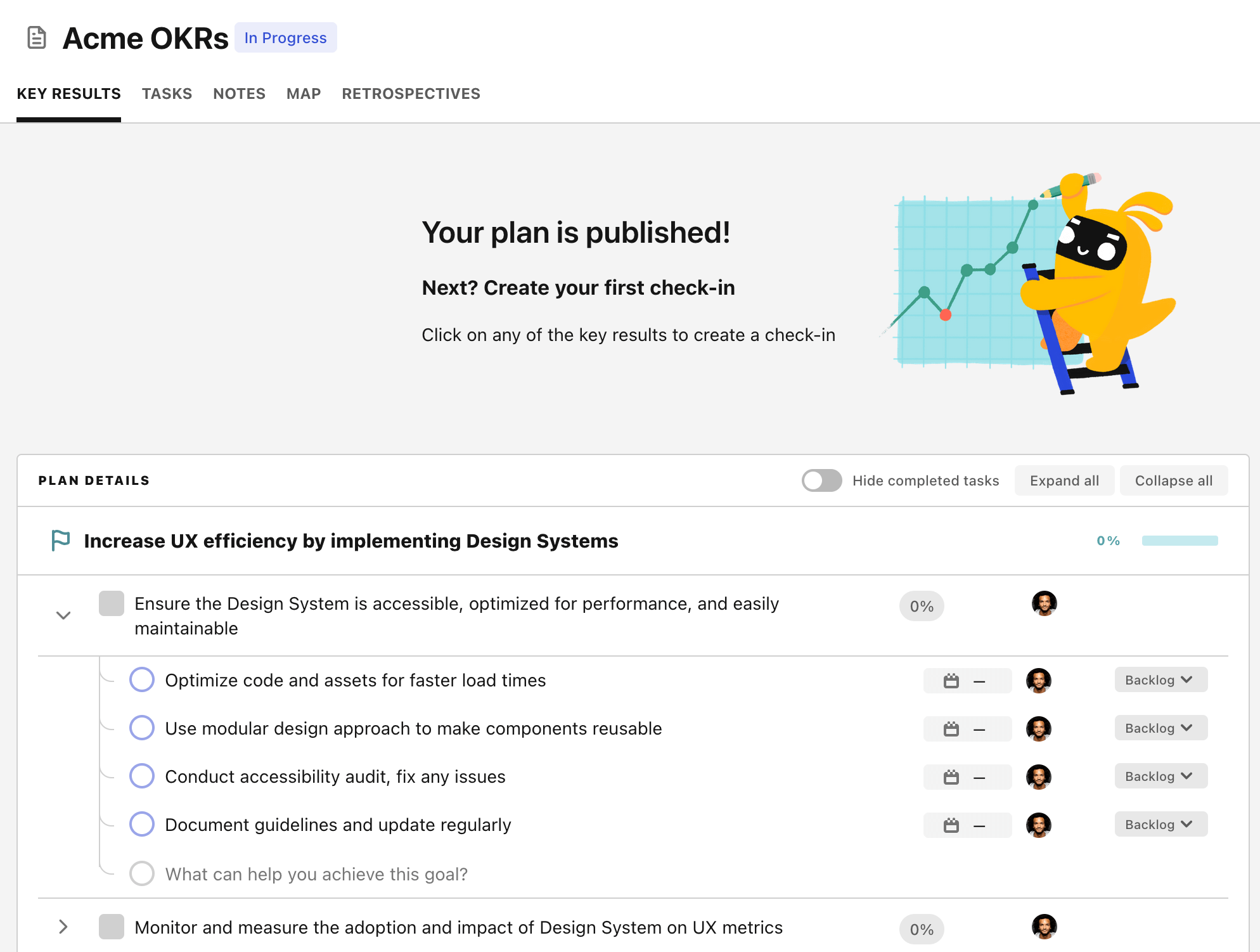OKR template to improve software system design and logging framework expertise
Your OKR template
The second objective is to stay up to date on the latest trends and best practices in the software system design field through personal research. This includes engaging in discussions with professionals in the field, reviewing resources and industry publications, and attending relevant conferences and webinars.
The third objective revolves around applying hands-on experience in a specific logging framework onto a project. By doing so, its effectiveness can be analyzed with initiatives involving defining log messages, integrating the logging framework into the project, and understanding its impact on the project's performance.
The last objective is to complete an online course on software system design. The aim is to apply the theoretical knowledge from the course to the practical, working world. This course completion acts as a recognition of successful learning in the field.
ObjectiveImprove software system design and logging framework expertise
KRCollaborate with senior engineers on at least two software design reviews and provide valuable insights
Prepare for software design reviews by doing research and gathering relevant information
Actively participate in software design reviews by asking questions and offering suggestions
Schedule meetings with senior engineers to discuss software design reviews
Document and share valuable insights and suggestions with senior engineers after the reviews
KRConduct research on best practices and emerging trends in software system design
Engage in discussions with industry experts and peers to gather insights on software system design best practices
Review industry publications and online resources for current best practices in software system design
Attend relevant conferences and webinars to stay updated on emerging trends in software system design
Set up alerts and notifications for research papers and articles on software system design
KRImplement logging framework in one project and analyze its effectiveness
Define and implement the desired log messages and their respective levels
Integrate the chosen logging framework into the project's codebase
Research and choose a suitable logging framework for the project
Analyze and measure the impact of the logging framework on project performance and debugging processes
KRSuccessfully complete online course on software system design with a passing grade
How to edit and track OKRs with Tability
You'll probably want to edit the examples in this post, and Tability is the perfect tool for it.
Tability is an AI-powered platform that helps teams set better goals, monitor execution, and get help to achieve their objectives faster.
With Tability you can:
- Use AI to draft a complete set of OKRs in seconds
- Connect your OKRs and team goals to your project
- Automate reporting with integrations and built-in dashboard
Instead of having to copy the content of the OKR examples in a doc or spreadsheet, you can use Tability’s magic importer to start using any of the examples in this page.
The import process can be done in seconds, allowing you to edit OKRs directly in a platform that knows how to manage and track goals.
Step 1. Sign up for a free Tability account
Go tohttps://tability.app/signup and create your account (it's free!)
Step 2. Create a plan
Follow the steps after your onboarding to create your first plan, you should get to a page that looks like the picture below.

Step 3. Use the magic importer
Click on Use magic import to open up the Magic Import modal.
Now, go back to the OKR examples, and click on Copy on the example that you’d like to use.

Paste the content in the text import section. Don’t worry about the formatting, Tability’s AI will be able to parse it!

Now, just click on Import from text and let the magic happen.

Once your example is in the plan editor, you will be able to:
- Edit the objectives, key results, and tasks
- Click on the target 0 → 100% to set better target
- Use the tips and the AI to refine your goals
Step 4. Publish your plan
Once you’re done editing, you can publish your plan to switch to the goal-tracking mode.

From there you will have access to all the features that will help you and your team save hours with OKR reporting.
- 10+ built-in dashboards to visualise progress on your goals
- Weekly reminders, data connectors, and smart notifications
- 9 views to map OKRs to strategic projects
- Strategy map to align teams at scale